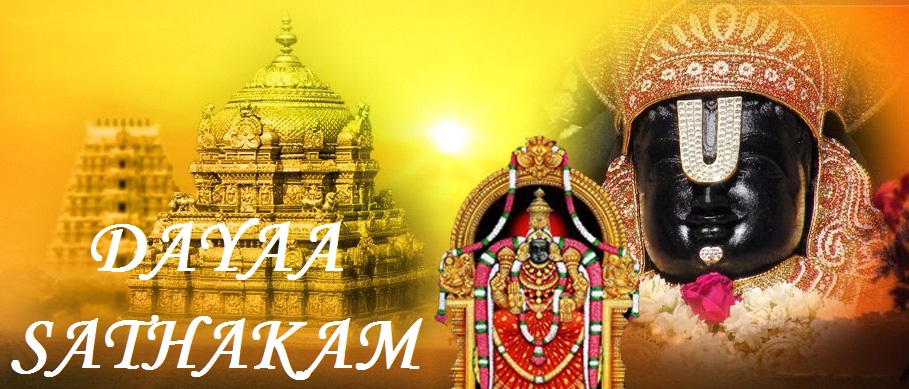xitiishvara pashu xarat.h xataja ku~Nkuma sthaasakaiH.
vR^iShaachala dayaalunaa nanu vihartum.h aalipyathaa
nidhaaya hR^idaye daye nihata raxitaanaaM hitam.h..86
(MEANING):
(MEANING):
Oh Dayaa Devi! You commanded ThiruvEnkadamudayAn to incarnate as ParaSuRaaman. There is some thing unique about this avathAram. This avathAram is an AavEsa avathAram, where the Lord entered into the body of a blessed chEthanam. In this avathAram, the Lord destroyed evil kings. ParaSurAman used His axe to destroy these kings. Oh Dayaa Devi! Common folks may wonder as to how You as Dayaa DEvi can put up with these cruelties. This is understood by the knowledgeable ones this way without any conflict : The war that ParaSuRaaman had with the kings is a kin to a Yaagam. The animals sacrificed in that Yaagam were the KshathriyAs, who misbehaved. They died at the hands of ParaSuRaaman and attained veera svargam after their sins were wiped out. Your Lord killed the offending Kings through ParaSuRaaman, cleansed them of all their paapams and enabled them to attain Sathgathy. Oh Dayaa Devi! This is an auspicious act befitting You. He covered You with the saffron paste (the King’s blood) and sported with You. The fight of ParaSuRAman is described as an act of KaaruNyam by the DayALu of ThiruvEnkatam at the behest of Dayaa Devi: “ VrushAchaladayALunA nihatha rakshithAnAm hitham hrudhayE nidhAya viharthum ParaSvaTatapOdhana pratana sath Krathu”. That war to mete out justice is saluted as an ausppicious Yaagam (Sath Krathu)

No comments:
Post a Comment